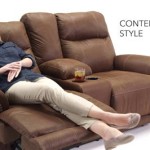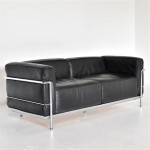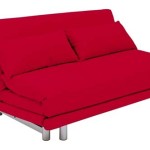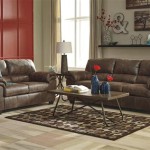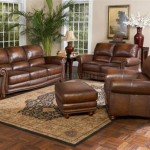5 Seater Sofa Dimensions: A Comprehensive Guide
Selecting a sofa is a significant decision in furnishing a living space. Factors such as style, comfort, and durability are crucial, but understanding the dimensions of a sofa, particularly a 5-seater, is paramount for ensuring it fits appropriately and fulfills its intended purpose within a room. This article provides a detailed exploration of 5-seater sofa dimensions, covering typical measurements, influencing factors, spatial considerations, and relevant design aspects.
A 5-seater sofa is designed to comfortably accommodate five adults. However, the precise dimensions can vary significantly depending on the style, design, and manufacturer. Understanding the typical size range and the factors that influence it is crucial for making an informed purchase.
Typical Dimensions of a 5-Seater Sofa
The overall dimensions of a 5-seater sofa are defined by its width (length), depth, and height. Each of these measurements impacts the sofa's spatial footprint and its suitability for a particular room layout. Understanding the typical range for each dimension is the first step in determining whether a 5-seater sofa is the right choice.
Width (Length): The width, or length, of a 5-seater sofa is generally the most significant dimension. It represents the overall horizontal span of the sofa. A typical 5-seater sofa will range in width from approximately 100 inches (254 cm) to 120 inches (305 cm). This range can vary depending on the design, particularly the width of the armrests and the amount of space allocated for each seating position. Some models, especially those with wide, rolled arms, may exceed 120 inches, while more streamlined designs might fall closer to the 100-inch mark. Modular sofas, which are composed of individual sections, can often be configured to achieve widths outside of this typical range.
Depth: The depth of a sofa refers to the distance from the front edge of the seat cushion to the back of the sofa. This dimension impacts the amount of space the sofa occupies within the room and the comfort level while seated. A typical depth for a 5-seater sofa ranges from 35 inches (89 cm) to 40 inches (102 cm). Deeper sofas, approaching 40 inches, offer more space for reclining and lounging, while shallower sofas, around 35 inches, may be more suitable for formal seating arrangements or smaller spaces. The depth of the seat cushion itself is an important element within the overall depth; a deeper seat cushion will naturally result in a deeper sofa.
Height: The height of a sofa is measured from the floor to the highest point of the backrest. This dimension influences the sofa's visual presence and its relationship to other furniture in the room. A typical height for a 5-seater sofa ranges from 30 inches (76 cm) to 35 inches (89 cm). Lower-profile sofas, closer to 30 inches, can create a more modern and minimalist aesthetic, while higher-back sofas, closer to 35 inches, offer greater back support and can contribute to a more traditional or formal look. The style of the legs also impacts the overall height; taller legs will naturally raise the seat height and the overall height of the sofa.
Factors Influencing 5-Seater Sofa Dimensions
Several factors influence the specific dimensions of a 5-seater sofa. These factors relate to the design style, the intended use, and the materials used in construction. Understanding these influences can help in selecting a sofa that best meets specific needs and preferences.
Style and Design: The overall style and design of a sofa significantly impact its dimensions. Traditional styles, such as Chesterfield sofas, often feature rolled arms and higher backrests, resulting in greater overall width and height. Modern or contemporary styles tend to have cleaner lines, lower profiles, and narrower armrests, leading to more compact dimensions. Modular sofas, composed of individual sections, offer greater flexibility in terms of size and configuration. These can be arranged in various shapes and sizes, including adapting to a 5-seater configuration with dimensions that vary depending on the specific modules used.
Armrest Style: The style of the armrests plays a significant role in the overall width of the sofa. Wide, rolled arms can add several inches to the width, while narrow, track armrests or armless designs minimize the overall footprint. The depth of the armrests can also contribute to the overall depth of the sofa. Some designs incorporate armrests that extend slightly beyond the backrest, increasing the overall depth. Considering the armrest style is crucial for accurately assessing the sofa's spatial requirements.
Backrest Height and Style: The height and style of the backrest influence both the visual appearance and the overall height of the sofa. High-back sofas provide greater back support but require more vertical space. Low-back sofas create a more open and minimalist feel. The style of the backrest, such as tufted, buttoned, or streamlined, can also affect the perceived size and style of the sofa.
Leg Style and Height: The legs of a sofa contribute to its overall height and style. Tall, exposed legs, such as those found on mid-century modern designs, raise the sofa and create a lighter, more airy feel. Short, hidden legs give the sofa a lower profile and a more grounded appearance. The material and design of the legs also contribute to the overall aesthetic of the sofa.
Cushion Fill and Construction: The cushion fill and construction impact the comfort level and the overall dimensions of the sofa. Overstuffed cushions can increase the depth and height of the seat, while firmer cushions maintain their shape and size more consistently. The type of filling, such as feathers, foam, or a combination, affects the cushion's density and resilience, which in turn can influence the perceived dimensions of the sofa.
Spatial Considerations for a 5-Seater Sofa
Before purchasing a 5-seater sofa, it is crucial to consider the spatial requirements of the room and how the sofa will fit within that space. Proper planning will ensure that the sofa not only fits comfortably but also allows for adequate circulation and functionality within the room.
Room Size and Layout: The size and layout of the room are the primary considerations when selecting a sofa. Measure the available space carefully, taking into account doorways, windows, and other architectural features. Consider the placement of other furniture, such as coffee tables, side tables, and entertainment centers. Ensure that there is adequate space to walk around the sofa and that it does not obstruct pathways or access points.
Traffic Flow: Consider the traffic flow within the room and how the sofa will impact movement. Avoid placing the sofa in a location that blocks primary pathways or creates bottlenecks. Allow for sufficient space behind the sofa for people to walk comfortably. If the sofa is placed against a wall, ensure that there is enough space between the sofa and any adjacent doorways or windows.
Scale and Proportion: Maintain a sense of scale and proportion when selecting a sofa. A large 5-seater sofa may overwhelm a small room, while a smaller sofa may appear insignificant in a large space. Choose a sofa that is proportionate to the overall size of the room and the other furniture within it. Consider the height of the ceilings and the size of the windows to ensure that the sofa complements the existing architectural elements.
Doorway Clearance: Before purchasing a sofa, measure the width and height of all doorways and hallways that the sofa will need to pass through during delivery. Ensure that the sofa can be maneuvered through these openings without causing damage to the sofa or the surrounding structure. If necessary, consider a modular sofa that can be disassembled and reassembled in the desired location.
Visual Weight: Consider the visual weight of the sofa and how it will impact the overall balance of the room. A dark-colored, heavily upholstered sofa will appear visually heavier than a light-colored, streamlined design. Balance the visual weight of the sofa with other elements in the room, such as artwork, lighting, and accessories. Use color and texture to create a sense of harmony and visual interest.
By understanding the typical dimensions of a 5-seater sofa, the factors that influence those dimensions, and the spatial considerations that are relevant to room planning, informed decisions can be made regarding sofa selection, resulting in a comfortable and aesthetically pleasing living space. Selecting the proper size is critical for both functionality and appearance.

5 Seat Sofa Allform

Euroco 5 Seat Sofa For Living Room L Shaped Modular Set With 2 Pillows Gray Com

Houston 5 Seater Leather Sofa Houzlook

Custom Sofa Dimensions For 5 People

Sterling Outdoor Aluminum V Shaped 5 Seater Sofa Set Cushion Khaki Natural Com

Temple Webster Haven 5 Seater Upholstered Sofa

L Shape Sofa Set Entile Leatherette 5 Seater Gkw Retail

Right Hand 5 Seater Modular Velvet Corner Sofa Blue Evja Beliani De

Sofa Dimensions A Complete Guide

Jiji 5 Seater Sofa Design In Kenya Moko Home Living


